Best Practices for
Slide Layout and Composition
Best Practices for Slide Layout and Composition
The foundation of any impactful presentation lies in well-crafted slide layout and composition. How you arrange text, images, and other elements directly influences how clearly your message is understood and how engaged your audience remains. Getting your slide layout right is both an art and a science — it requires balance, clarity, and intention.
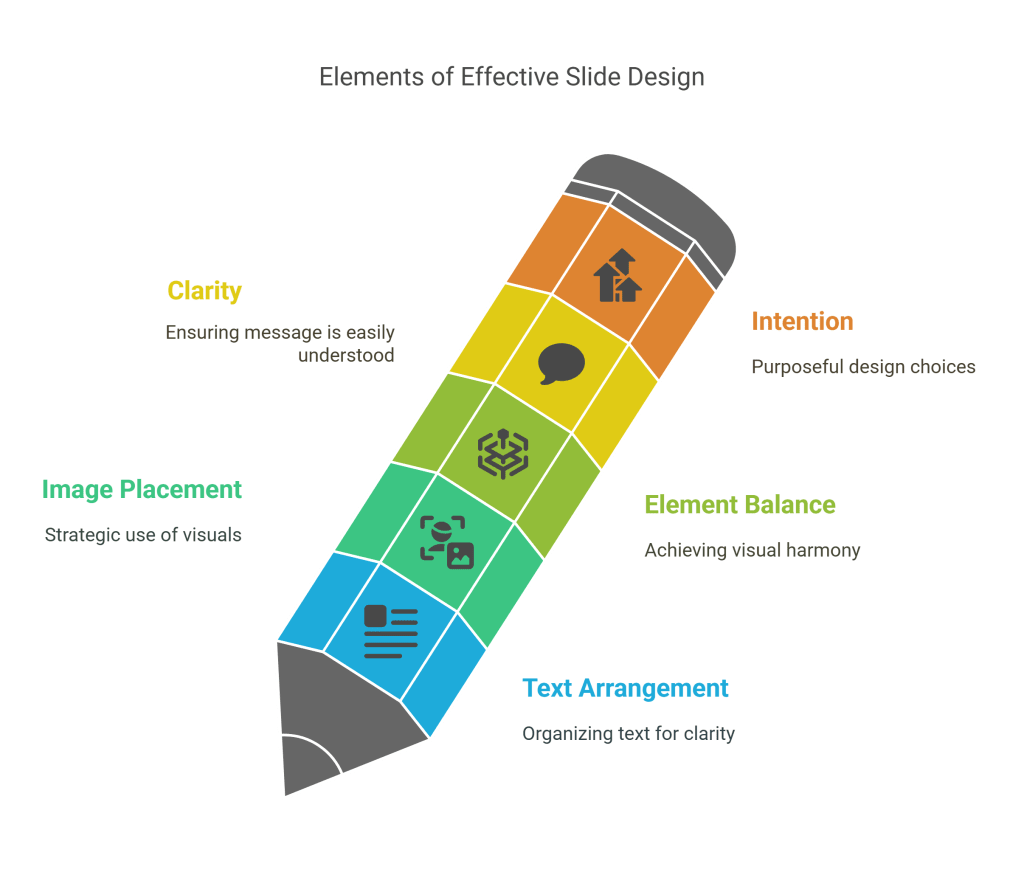
Why Layout and Composition Matter
Good slide layout guides your audience’s eyes naturally through your content, highlights key points, and makes your presentation easier to follow. Poorly composed slides can confuse viewers, dilute your message, and reduce your credibility.
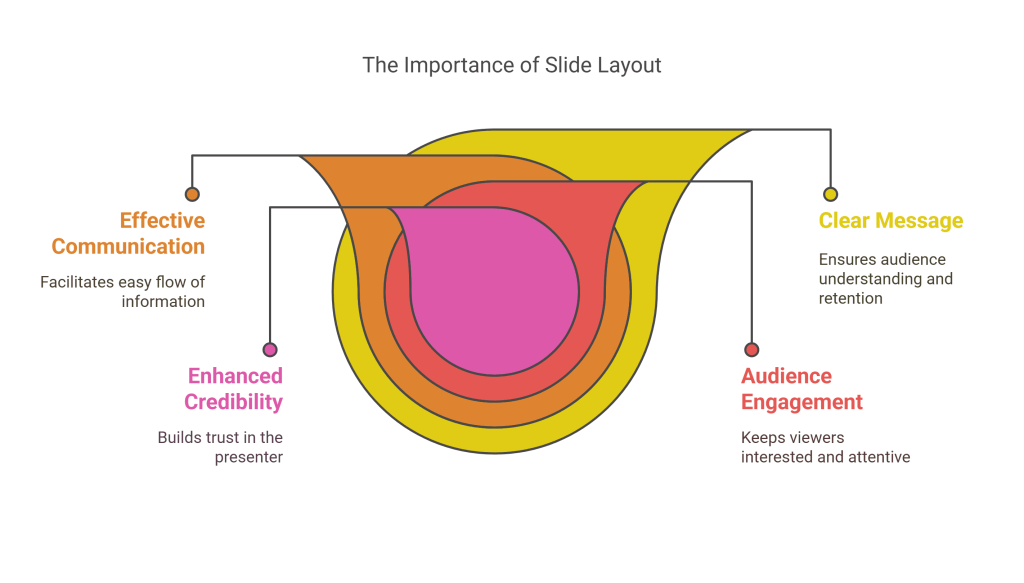
Core Principles of Effective Slide Layout
Balance and Alignment
Keep elements evenly distributed for visual stability. Align text and visuals consistently for a clean, professional look.Use of Grids and Guides
Grids help maintain structure and proportion, ensuring consistent spacing and placement across slides.Hierarchy of Information
Prioritize content using size, color, and positioning to show what’s most important.Whitespace is Your Friend
Allow breathing room around elements — it prevents clutter and improves readability.Consistency Across Slides
Use a unified layout style and templates to maintain flow and reinforce branding.
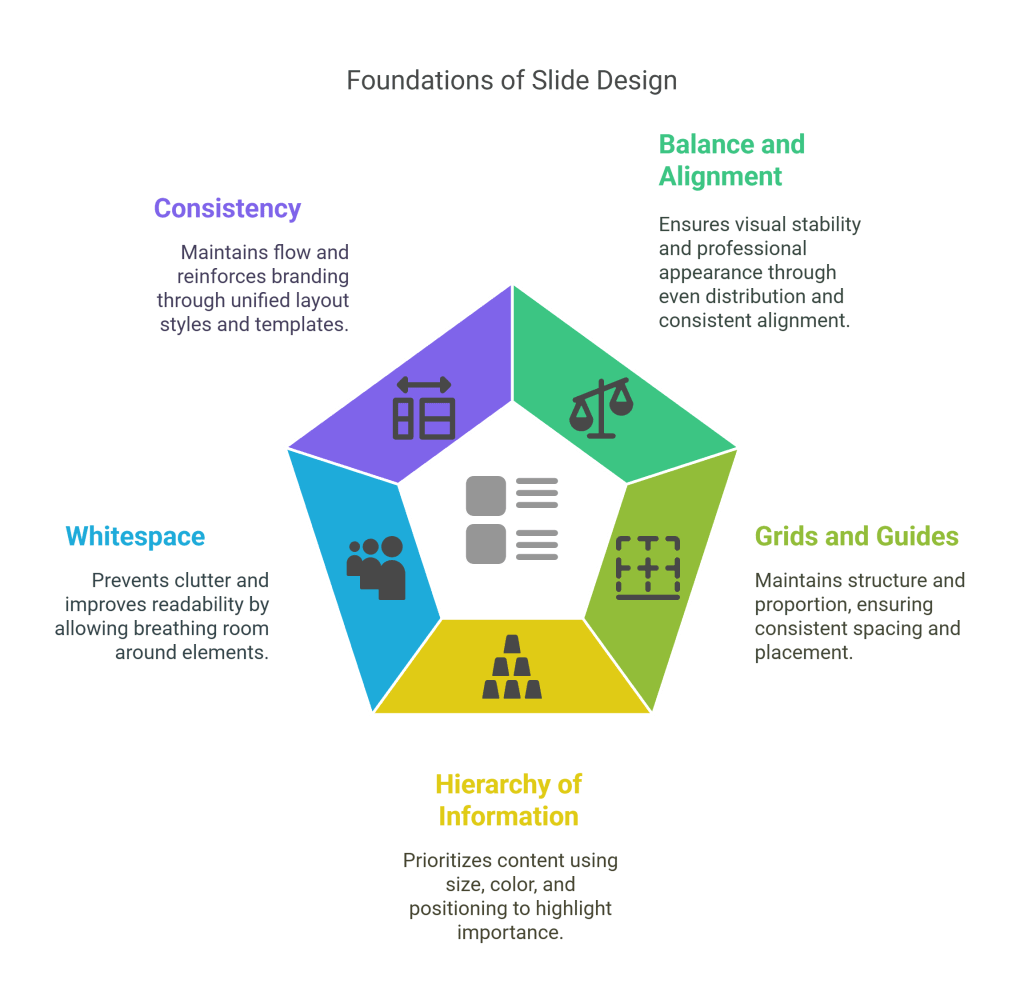
Practical Tips for Slide Composition
Place titles and key messages where eyes naturally start (top-left or center).
Group related items visually to show connection.
Avoid overcrowding slides — aim for clarity, not quantity.
Use contrasting colors to separate background and content.
Keep fonts readable: size, style, and spacing matter.
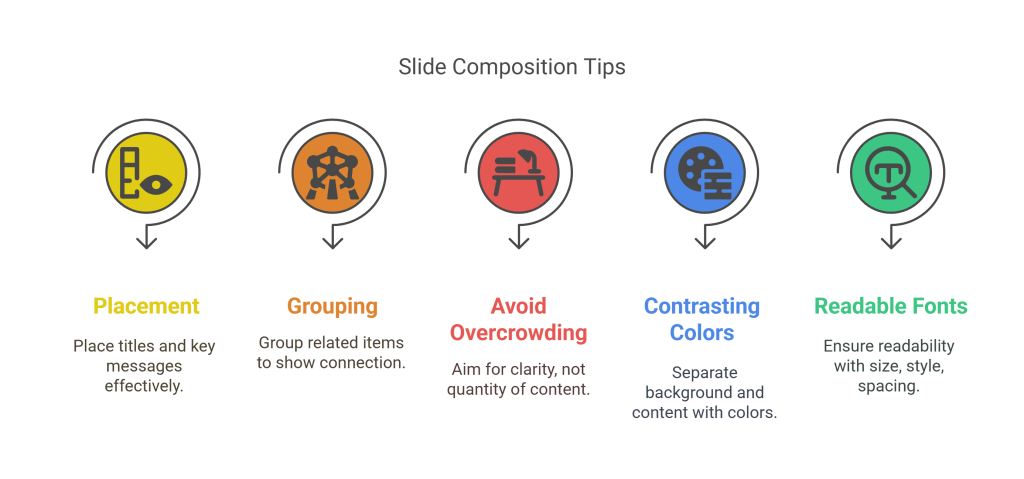
Common Mistakes to Avoid
Misaligned elements causing a messy look.
Overusing text blocks with little visual relief.
Inconsistent layouts that distract the audience.
Ignoring the “Z” or “F” reading patterns in Western cultures.
Crowding too many points on one slide.
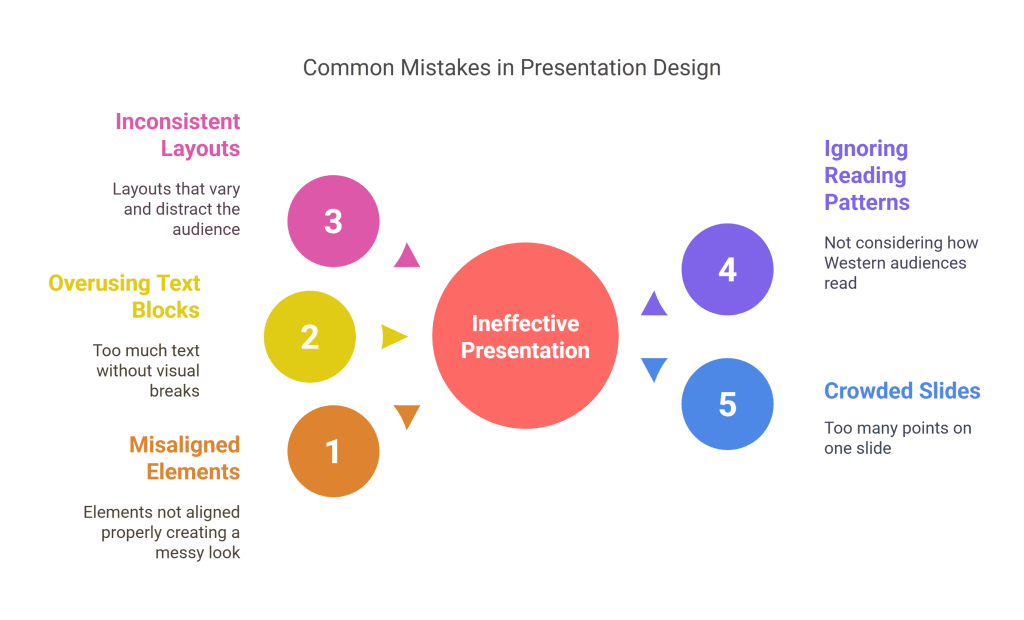
Final Tips
Mastering slide layout and composition elevates your presentations from good to great. With intentional design, you guide your audience effortlessly through your story, ensuring your message lands clearly every time. A1 Slides specializes in creating visually stunning and strategically composed slides tailored for maximum impact.





